Many boat shackles and connectors are functionally very similar, so it can be difficult to know exactly what shackle is best for each application. That’s why we have put together this blog to walk you through all of the boat shackle types available at upfront.com and tips on where to use them.
Boat Shackle Types
D Shackles – Long, Short, Fat, Thin and Twisted!
D shackles are the most common and popular shackles found on traditional sailboats. D-shackles can be identified by their D shape. These shackles are long and narrow which means that the ends of the D shackle have a higher SWL when the load is in line. D shackles are not designed for side loads because the sides of the shackle have a lower SWL and it could cause bending or twisting of the shackle.
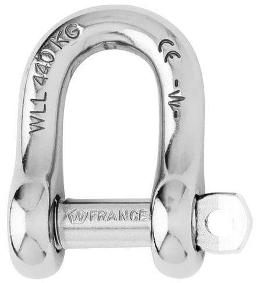
Long, Short and Wide D shackles
There are Various different shaped D shackles used to allow for different required distances between fixing points or specific shackle needs, such as attaching an outhaul line to a press ring on a sail. Keep in mind that the longer and wider a D shackle is, the lower the off-axis SWL becomes.
Twisted D Shackles
Twisted D Shackles are used to attach systems such as blocks at a 90 degree angle to the orientation of the attachment point.
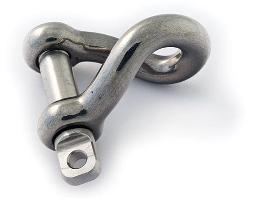
D Shackles are a long-term, fixed solution for high in-line loads.
Bow Shackles
You can tell when you’re holding a bow shackle because of the rounded lightbulb shape of the metal.
The bow shackle has a rounded shape so that it can carry the load from many directions without developing as much side load, and to keep a consistent SWL. However, when compared to D shackles, the larger shape of the loop does reduce the overall strength of the shackle from a single point, for the same pin size.
Bow shackles are used in applications where the load is not from a constant direction – for example, a boat swinging on a mooring – hence the name bow shackle!
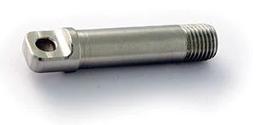
Note on Pins
For all types of pinned shackles there are a variety of pin styles: The standard pin will be fully removable with a flattened end and a hole to allow the use of a marlin spike to open it. However, low profile Allen screw heads are also available, as are captive pins, to prevent losing the pin overboard. A clevis pin with cir-clip is another alternative.
Soft Shackles
We are big fans of soft shackles. They are lighter, stronger and have a similar life span to traditional metal shackles. As a versatile shackle, soft solutions can replace virtually all metal connectors and are quickly growing in popularity in sailing circles.
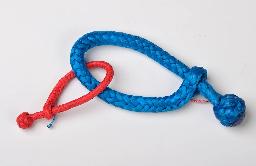
You can read more about why we are such big fans of soft solutions in our blog here.
Snap Shackles
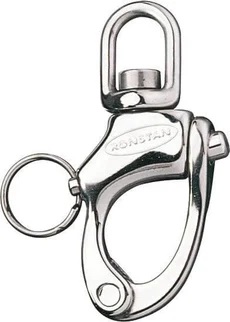
One application that soft terminations cannot replace are Snap shackles. These are spring locked fasteners that can be quickly and easily attached to a line and can also be released under load. While snap shackles are not as strong or secure as other shackles, they are great for use on dynamic lines or anywhere that your shackle needs to be repeatedly connected and disconnected, for example, spinnaker sheets and guys.
Snap Hooks and Carabiners
Snap hooks and Carabiners use a spring loaded gate for quick connection and disconnection of the hook to one or more attachment points. They are designed to be used mostly as a quick or temporary solution in relatively low load applications.
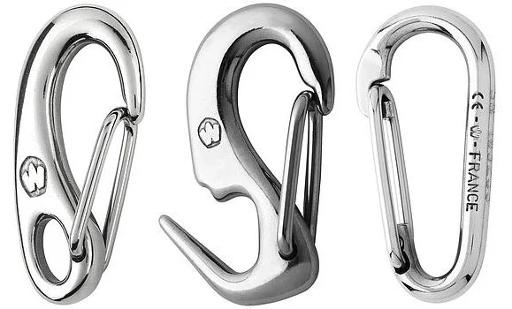
Snap hooks vary slightly from Carabiners because snap hooks have a second closure point to allow them to be permanently attached to a fixing point. In some cases this is closed – to allow them to be permanently attached to the end of a small diameter control line. On others, often called knock-on snap hooks they are designed to be permanently attached to another opening i.e. They are most commonly used as sail hanks and are attached to an eye in the sail luff. Carabiners have the same closure mechanism for the line, but all lines on a carabiner go through the central hole.
These fittings are designed to literally snap on, or pushed onto, the line or fixing point with one hand. However, the compromise for this convenience is that they are only suitable for low load applications. They are great for anything which needs to be fastened down as an added safety measure or to avoid it going overboard!
Halyard Shackles
Halyard shackles have a closed eye section at the top of the shackle which is designed to be permanently spliced to the end of the halyard. The pin at the bottom is removable to allow it to be attached to the mainsail headboard plate.
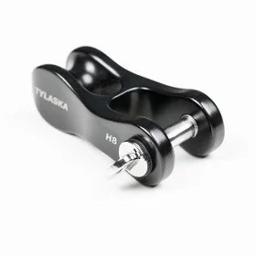
These boat shackle has been designed specifically for highly loaded halyard applications and are available in 1:1 or 2:1 configurations. 2:1 Halyard shackles will have a sheave in the upper end to allow the halyard to run through it rather than be spliced to the shackle.
What Size boat shackle do I need?
In the vast majority of situations, you can take your lead from whatever the boat shackle is to be attached to. If it is attaching to a fixing point on another piece of hardware then matching the pin diameter of the boat shackle to fixing hole will ensure their working loads are similar. If you are attaching to a highly loaded line, then use the Maximum Working Load of the line and match that to the recommended Safe Working Load of your shackle.

In low load, non-critical applications it simply comes down to making sure lines and/or pins will fit!
For soft shackles, it is all about matching working loads and then ensuring that the shackle is long enough to go around attachment point and can still be connected securely.
Conclusion on boat shackles
While traditional boat shackles certainly have their place, we believe that you should consider making the switch to soft shackles where possible. It is a quick and easy change and one of the cheapest upgrades you can make to reduce the weight of your boat without compromising safety or efficiency.
If you have any questions about boat shackle, please feel free to email us at [email protected], or click the link below to see our full range:


Choosing the right boat shackle – Where do I start?